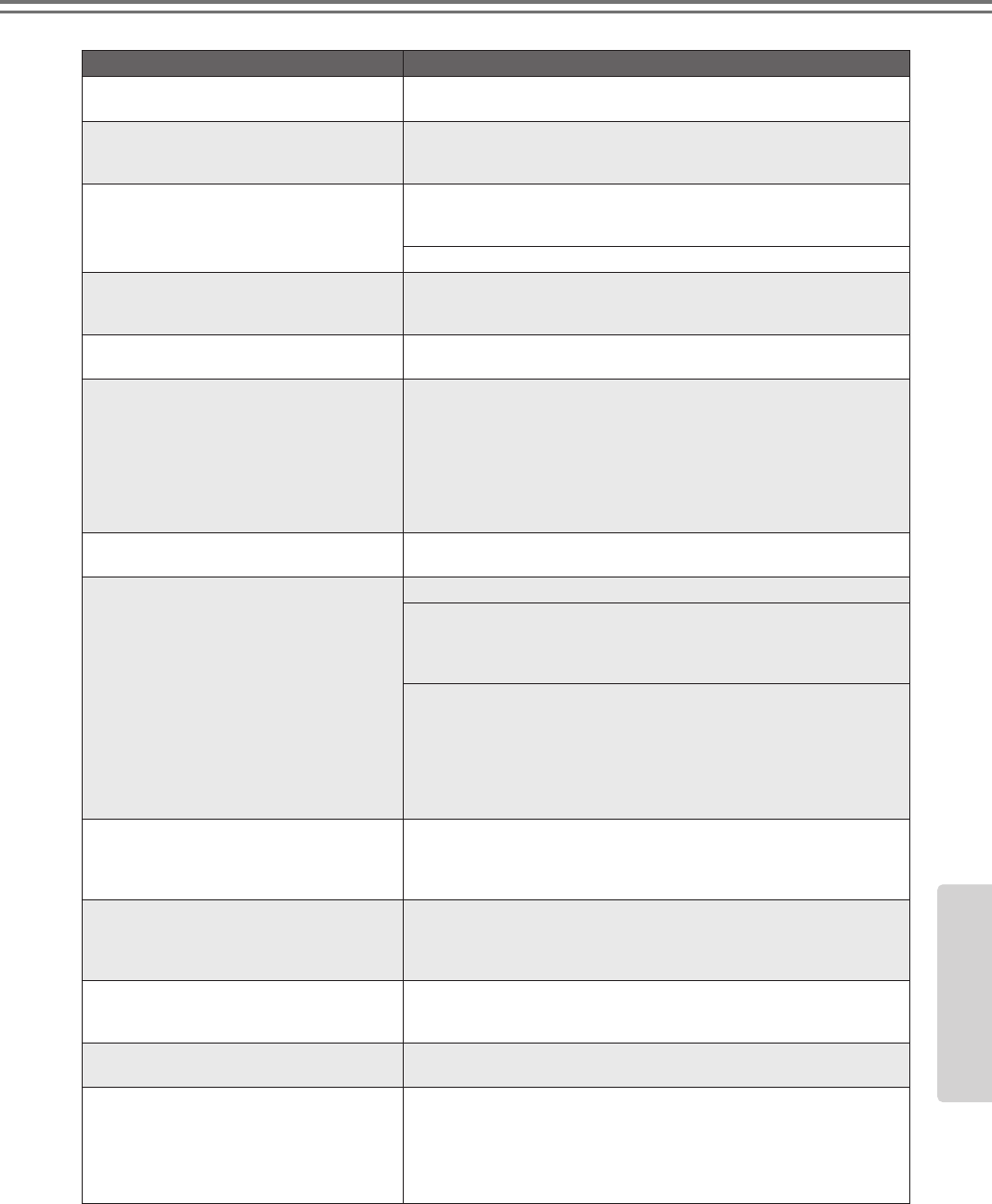
PSR-E323/YPT-320 Owner’s Manual 63
Appendix
Troubleshooting
Problem Possible Cause and Solution
When the instrument is turned on or off, a
popping sound is temporarily produced.
This is normal and indicates that the instrument is receiving electrical
power.
When using a mobile phone, noise is pro-
duced.
Using a mobile phone in close proximity to the instrument may produce
interference. To prevent this, turn off the mobile phone or use it further
away from the instrument.
There is no sound even when the keyboard is
played or when a Song or Style is being
played back.
Check that nothing is connected to the PHONES/OUTPUT jack on the
rear panel. When a set of headphones is plugged into this jack, no sound
is output.
Check the Local Control on/off. (See page 59.)
Not all of the voices seem to sound, or the
sound seems to be cut off.
The instrument is polyphonic up to a maximum of 32 notes — including
Dual voice, Split Voice, auto accompaniment, song, and Metronome.
Notes exceeding this limit will not sound.
Playing keys in the right hand area of the
keyboard does not produce any sound.
When using the Dictionary function (page 54), the keys in the right hand
area are used only for entering the chord root and type.
• The volume is too soft.
• The sound quality is poor.
• The rhythm stops unexpectedly or will not
play.
• The recorded data of the Song, etc. does
not play correctly.
• The LCD display suddenly goes dark, and
all panel settings are reset.
The batteries are low or dead. Replace all six batteries with completely
new ones, or use the optional AC adaptor.
The Style or Song does not play back when
the [START/STOP] button is pressed.
Is External Clock set to ON? Make sure External Clock is set to OFF;
refer to “External Clock Settings” on page 59.
The Style does not sound properly.
Make sure that the Style Volume (page 53) is set to an appropriate level.
Is the Split Point set at an appropriate key for the cords you are playing?
Set the Split Point at an appropriate key (page 47).
Is the “ACMP ON” indicator showing in the display? If it is not showing
press the [ACMP ON/OFF] button so that it does show.
• The auto accompaniment will sometimes not change when related
chords are played in sequence (e.g. some minor chords followed by the
minor seventh).
• Two-note fingerings will produce a chord based on the previously
played chord.
• Playing two same root keys in the adjacent octaves produces accom-
paniment based only on the root.
No rhythm accompaniment plays when the
[START/STOP] button is pressed after select-
ing Style number 098–106 (Pianist).
This is not a malfunction. Style number 098–106 (Pianist) have no
rhythm parts, so no rhythm will play. The other parts will begin playing
when you play a chord in the accompaniment range of the keyboard if
auto accompaniment is turned on.
The footswitch (for sustain) seems to pro-
duce the opposite effect. For example, press-
ing the footswitch cuts off the sound and
releasing it sustains the sounds.
The polarity of the footswitch is reversed. Make sure that the footswitch
plug is properly connected to the SUSTAIN jack before turning on the
power.
The sound of the voice changes from note to
note.
This is normal. The AWM tone generation method uses multiple record-
ings (samples) of an instrument across the range of the keyboard; thus,
the actual sound of the voice may be slightly different from note to note.
The ACMP ON indicator does not appear
when the [ACMP ON/OFF] button is pressed.
Always press the [STYLE] button first when you are going to use any
style-related function.
The harmony doesn’t sound.
The method of sounding the harmony effect (01–26) differs depending on
the selected type. For Types 01–05, turn the Auto Accompaniment on and
play it by pressing a chord in the auto accompaniment section of the key-
board, then play some keys in the right-hand side to get the harmony effect.
For Types 06–26, turning the Auto Accompaniment on or off has no effect.
However, it is necessary to play two notes simultaneously for Types 06–12.
Appendix


















